1. MercuryHouseOne
MercuryHouseOne is a home designed by
Arturo Vittori of the Italian architecture firm Architecture and Vision.
Vittori is a member of the American Institute of Aeronautics and
Astronautics, and his interest in technology is obvious to anyone who
sees the home’s unique raindrop shape.
MercuryHouseOne is a mobile home, but any similarity to an RV ends
there. It runs entirely on solar power and has a thin marble exterior,
and according to Architecture and Vision’s website , “the interior is
equipped with [the] latest lighting, audio and video technologies in
order to maximize the user experience.”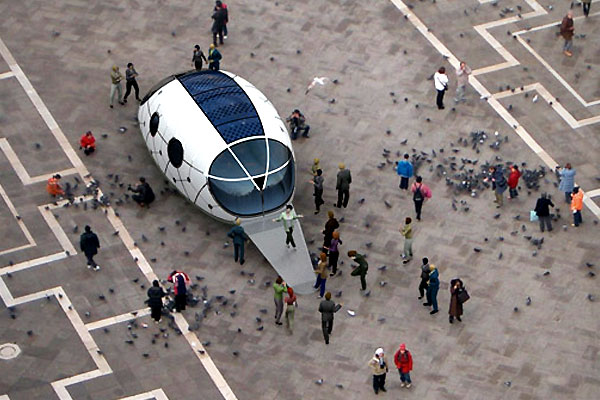
Here are ten amazing futuristic home
designs. Some of the designs are bold, some are bizarre, and some seem
unlikely to get past the drafting table. However, they all address
current challenges and create new rules.
2. Airdrop House
The Airdrop House is so futuristic and forward-thinking that it has
yet to get past the artistic rendering stage, so anyone who wants one
will have to wait until some distant tomorrow. However, they are being
designed to provide emergency shelter to disaster survivors , so
hopefully the need for them won’t come up too often.The home is designed by Andrew Maynard Architects in response to the 2004 Indian Ocean tsunami and the aftermath of Hurricane Katrina. The home is intended to be air-dropped into disaster areas and used as a temporary shelter. Its design also permits the growing of plants on its surface, to provide both food and shade.

3. Birds Island
Birds Island is a dwelling designed by Graft architects that
addresses an age-old quandary—how do you enjoy the great outdoors and
sit in your house at the same time? Located in Kuala Lumpur, the home
has a silicone glass exterior “skin” that makes this very thing possible. It changes the transparency of the walls, allowing residents to drink in the views in all their splendor, get a canopy of shade, or shut everything out entirely.
Birds Island is also a sustainable dwelling, and its outer skin collects rain water, and harnesses solar energy and wind power . The structure’s placement on a pier is another nod to energy efficiency. It allows the natural cooling of the water underneath and permits energy collection and distribution from nearby lotuses.
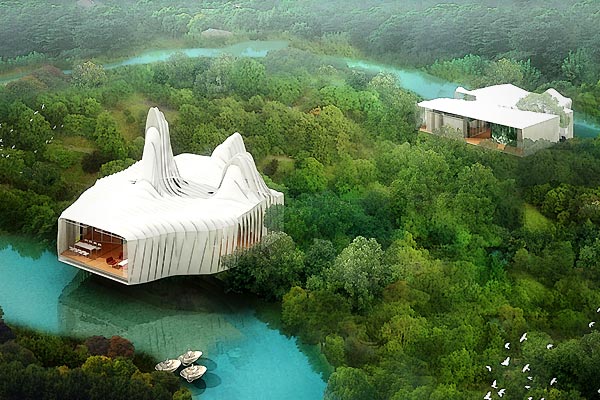
Many dwellings have been built with what its creators call a “futuristic design.” However, Dupli Casa, from Germany’s J. Mayer H. Architects, truly lives up to the description. In fact, the website Digsdigs.com covered it in a 2009 article titled, “The Most Futuristic House Design in the World.”
Dupli Casa is a three-story dwelling near Ludwigsburg, Germany. On the top floor, bedrooms jut out dramatically from the structure’s core, each with a window strategically angled to provide optimum views of the surrounding area. One such view is of David Chipperfield’s Museum of Modern Literature, which sits across the valley in the town of Marbach am Neckar.
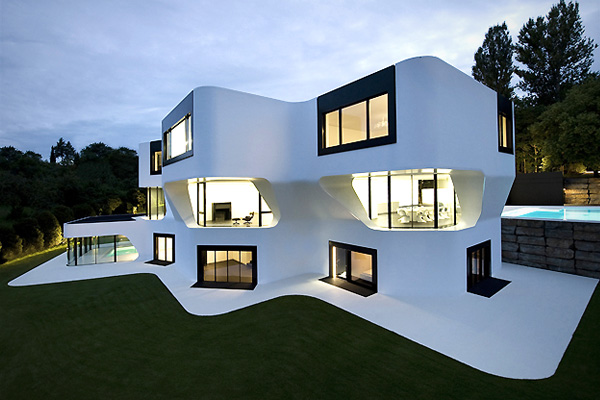
Karim Rashid is the architect behind the striking-looking Komb House. Rashid was born in Egypt and studied in Canada and Italy, and according to his own website , he has more than 3,000 designs currently in production.
Komb House uses state-of-the-art technology to minimize its environmental impact. The water is heated by solar panels, and the structure reuses grey and pluvial water. It’s composed entirely of reusable materials, such as wood and glass, and it can be taken apart and put back together again…should the need to do so ever arise.
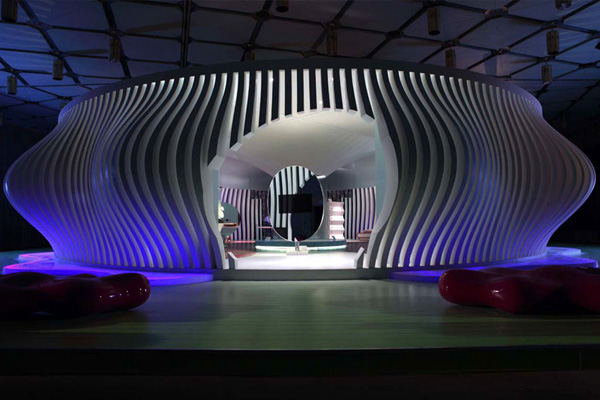
6. Shell House
If one were flying over Karuizawa, Japan, and saw the roof of the
Shell House, it’s possible that one could entirely miss the fact that
it’s a house. The dwelling was created by the Japanese architecture firm
ARTechnic, and its unusual exterior design resembles nothing so much as
a cannoli transforming into a spaceship.Described as “out of this world” on the website Trendir , the structure’s curves and ellipses give it a look like nothing before or since. It has sound design principles behind it, however, and takes advantage of natural light and interior textures, so you can feel at home once you’re actually inside of it.
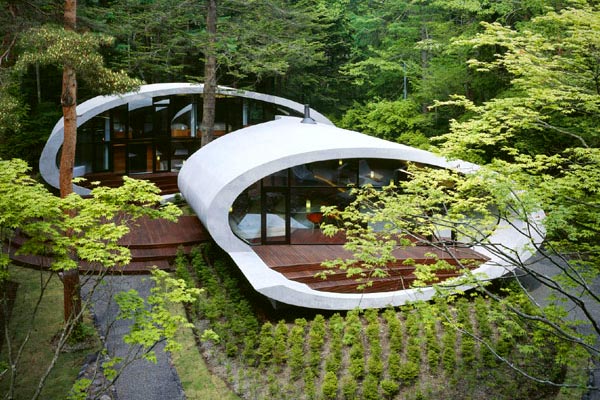
7. Edge House
Mobius Architects is a firm based in Poland that began construction
on the Edge House in Krakow in 2008. It was finished in 2010, and the
visually striking final product is defined by a steep roof that doesn’t
make it appear to lean so much as almost fully recline.The structure complies with local building codes, which stipulate that a roof’s slope must exceed 30 degrees . The architects abided by the letter of the law, but clearly took liberties with its intent, and created a unique dwelling for the hillside locale.
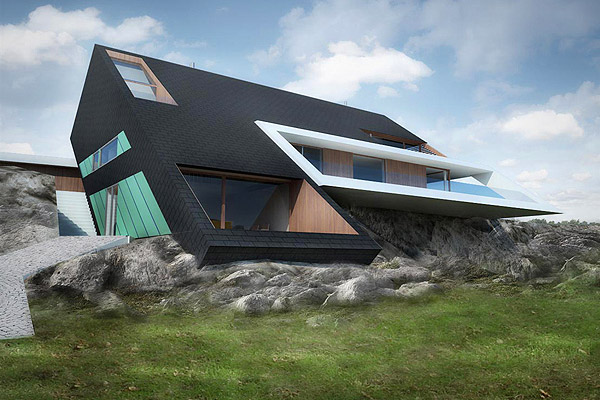
Those who excelled in the lonely pursuit of advanced mathematics may remember references to non-orientable surfaces, or two-dimensional areas designed to obscure left from right, or inside from outside. This phenomenon is found in the Mobius strip and the Klein bottle, the latter of which was described by German mathematician Felix Klein.
Ever on the lookout for untried designs, architect Rob McBride found one in this arcane mathematical occurrence, and built a house inspired by it on Australia’s Mornington Peninsula. Built around a courtyard at the center, the interior also features an unorthodox layout that at times recalls the work of Dutch artist M.C. Escher. Remember to bring a map of the house when you visit, as well as a compass and a GPS.
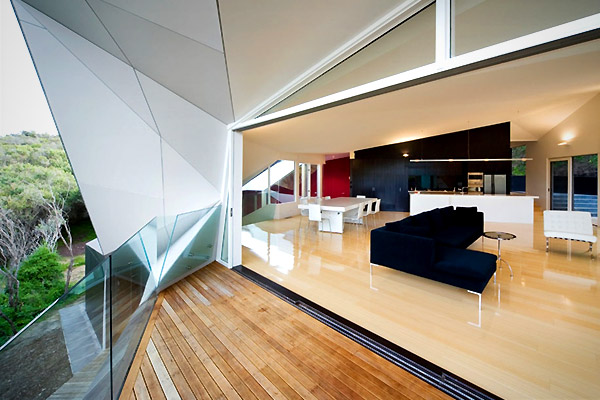
9. Wright Conversion
Durban, South Africa, is the site of many thatched-roof dwellings,
but only one has the curved extension that Elmo Swart Architects added
and dubbed the Wright Conversion. The extension has allowed space for a
new bedroom, two offices and an entertainment center, but it’s notable
mainly for its warped exterior design.The interior is consistent with the original dwelling and faithful to its themes. Cork and glass are used throughout, wooden furniture is a dominant theme, and the structure offers generous open views of the surrounding natural area.

As technology becomes an increasingly inescapable part of daily life, more people express a desire to get away from it. Campgrounds can be hard to locate, however, and there’s no guarantee of available spaces. Worst of all, you can’t even use your electric salad spinner at many of them.
Luckily, there is the Ecopod. Described as “a small and energy-efficient way for a homeowner to get off the grid” by the manufacturer’s official website , the Ecopod is a container home made in part out of rubber that’s been recycled from discarded tires. It can be easily relocated from place to place, and it derives its power from an 80-watt solar panel.
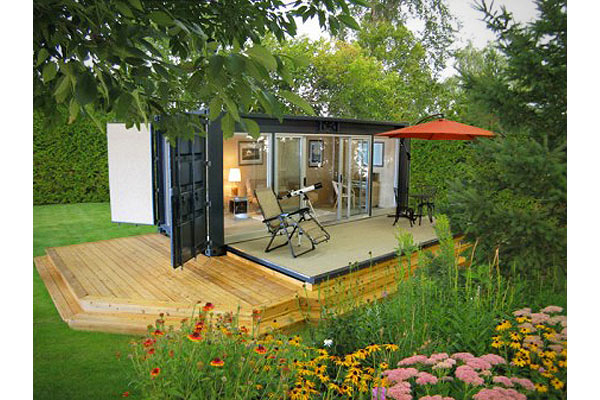
source



0 comments:
Post a Comment